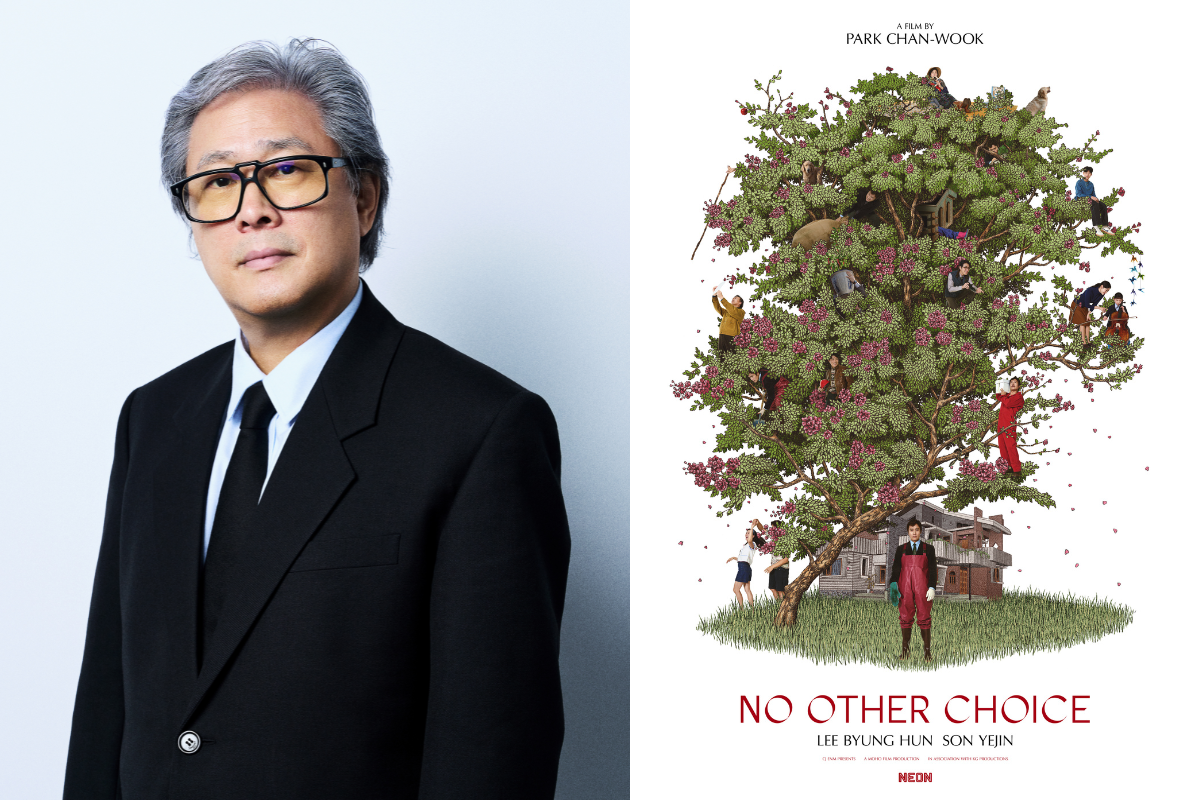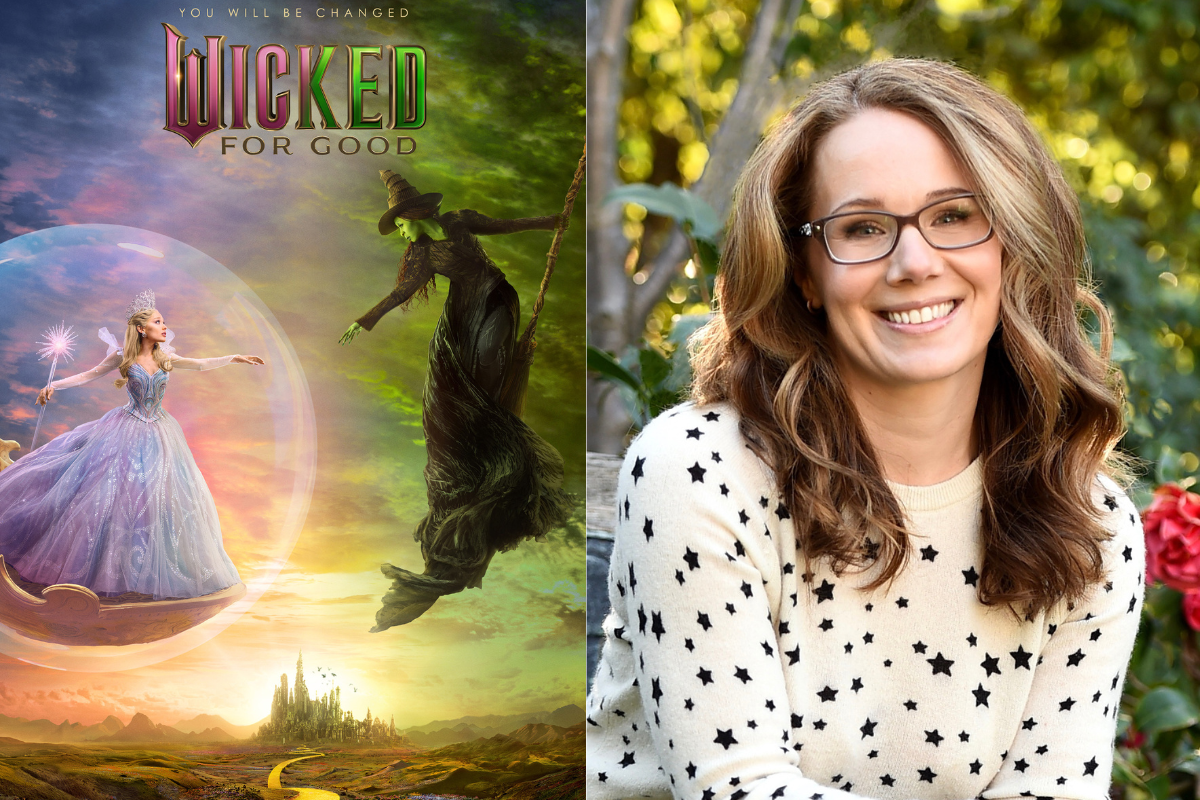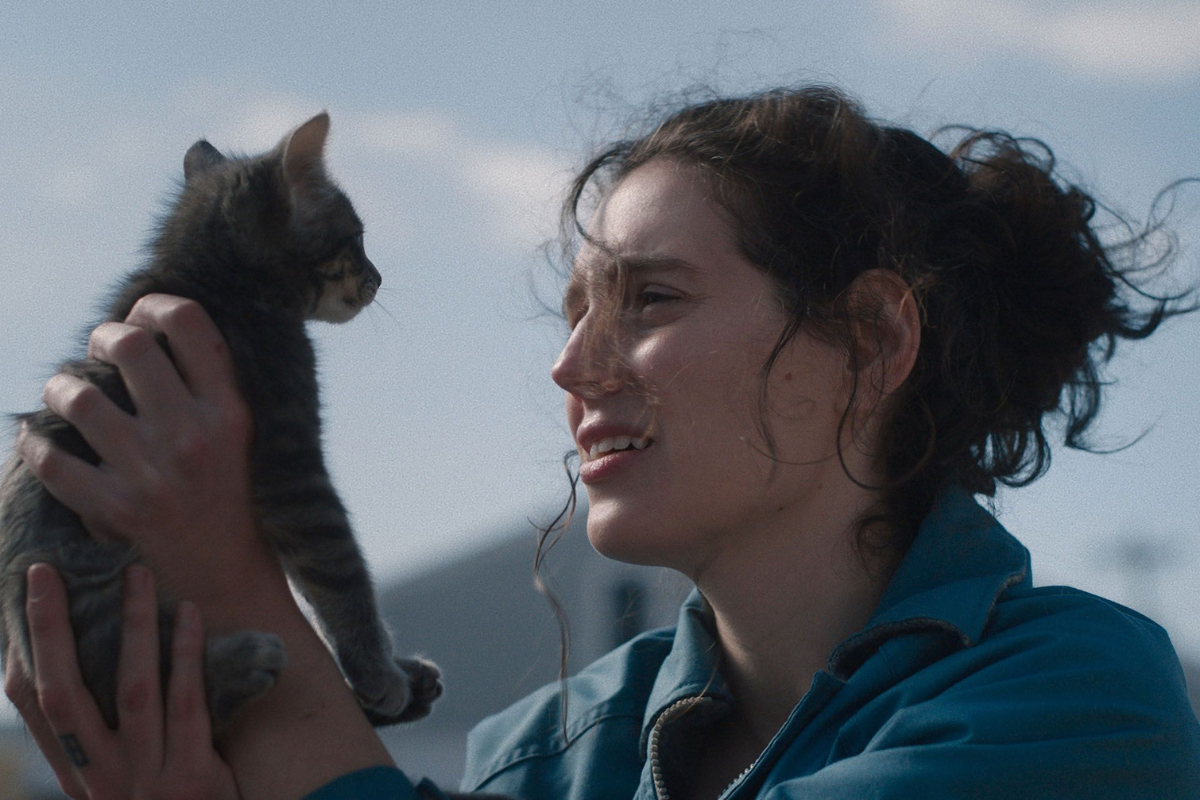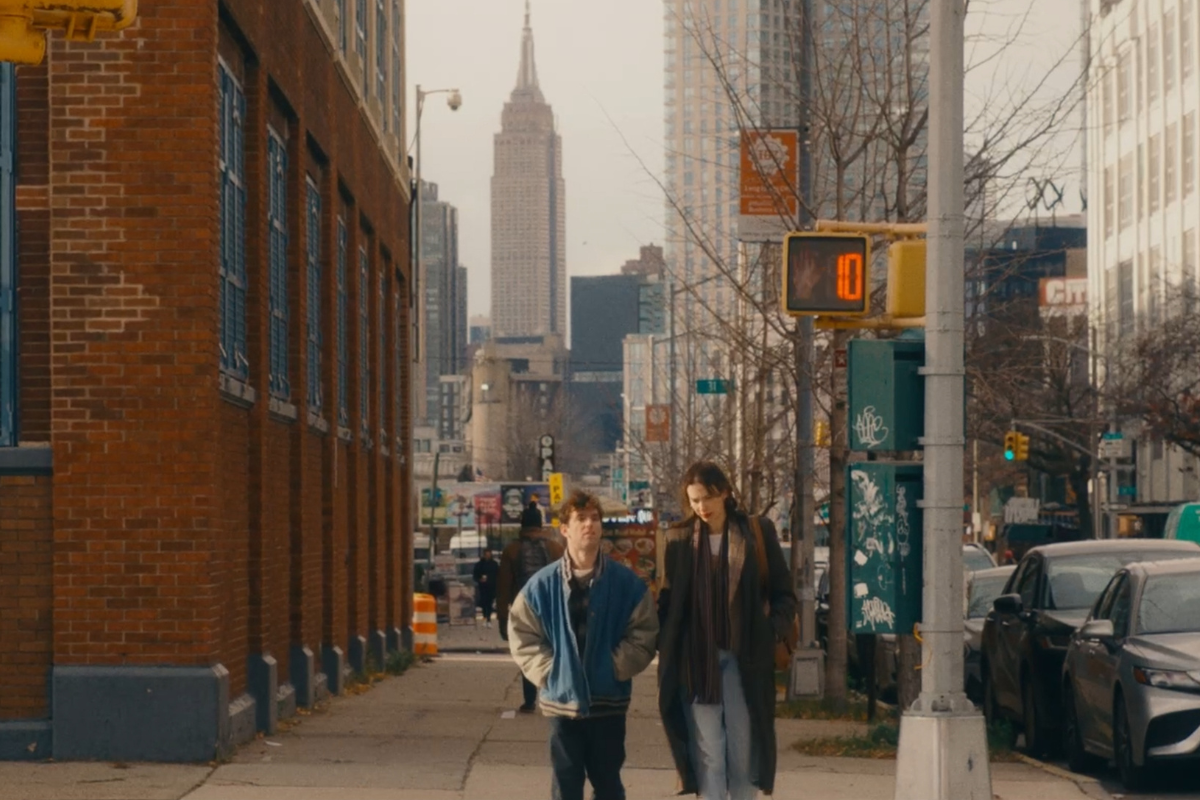INDIE SPOTLIGHT: Interview with ‘Asleep in My Palm’ Writer-Director Henry Nelson and Actor-Producer Tim Blake Nelson
Henry Nelson and Tim Blake Nelson talk about their latest creative collaboration, ‘Asleep in My Palm,’ from Henry’s approach as a writer-director to Tim’s approach as an actor and producer in supporting Henry’s vision, what their North Star was, to where they see the future of independent films and the pros and cons of lookbooks.
Asleep in My Palm explores the nature of parenthood and class in America as a father and daughter live off the grid in rural Ohio near a small liberal arts college. The two must face the challenges of her sexual awakening and need for independence as he escapes his violent and conflicted past. At once poignant and mordantly funny, the film delves into an America rarely seen, while juxtaposing it with the rarified privileges of an elite college in the social media age.
While admiring each other’s variety of guitars on display, Henry Nelson excitedly brought out a unique and beloved six string acoustic. The guitar had seen some life; knicks, dings, mismatched pegs, its previous owner attempted to strip back its original luster, but instantly gave up – one of the unique features that Henry took a deep and affectionate liking to.
After this (not so) brief moment of us fawning over each other’s guitars and love of music (all the while his father Tim Blake Nelson patiently waited for the interview about their new film to begin) I came upon this realization that just like Henry’s guitars, not mainstream, questionable aesthetics, not particularly something you’d find on the walls of Guitar Center – they too, just like his characters in their latest film, Asleep in My Palm, were one in the same.
I can only assume that the way he admires his guitars, their imperfections and all, that’s what intrigues him about the world and people around him – their vulnerabilities and their emotional distress. If those once forgotten, put aside guitars could talk – what would they say? I’m sure Henry would have a thought or two.
Both Henry and his father Tim recently spoke about their latest creative collaboration, Asleep in My Palm, from Henry’s approach as a writer-director to Tim’s approach as an actor and producer in supporting Henry’s vision, what their North Star was, to where they see the future of independent films and the pros and cons of lookbooks.
This interview has been edited for content and clarity.
Sadie Dean: What came first for you? Story or these characters?
Henry Nelson: I'd say it was the character. I really loved this movie, Chuck & Buck - it's a really important movie to me. There are aspects of the main character that I really related to, and really pulled my heart, and I wanted to write something in that vein. I wanted to explore that in my own way, in a very different setting. And so, from that initial impulse, this whole other movie sort of came. And characters based off of myself, characters based off of my friends, characters that are based off of nobody [laughs] it all sort of emerged from that. And also, just a lot of things, what I was feeling as a moody college student about to graduate, having a quarter-life crisis. [laughs]
Sadie: All those things are in there. There's a great line in the film, “Everyone's got their breaking point.” And I just feel like that's just such a great foundation for character exploration and development. I'm curious for you. In terms of exploring those characters, especially like Beth Anne and following her journey, and her awakening – what was that process like tapping into that?
Henry: Well, I do know, a lot of it came from how I was feeling in college. In college, I had a really hard time socializing, I was really, really bad at it. I remember, for example, I was in a really, really long six-year relationship that ended in my junior year of college...I had not flirted since middle school, I had not made any effort. [laughs] And I remember, calling my dad, ‘Hey, I met this girl. She's really pretty. I think my game plan is I'm gonna find a way to talk to her. And then I'm gonna see if we have music in common. And then we're going to be friends. And then maybe a couple of months later, when we get to know each other, maybe we'll take a walk. And then after that, maybe I'll try to hold her hand!' [laughs] And he’s just like, ‘You know you're 20, you could just ask her out.’ [laughs]
I remember thinking a lot about that, mixed with thinking a lot about my own sort of inability to relate socially in college mixed with some very real issues my friends were having in college who are like, financially disadvantaged, and I'm so privileged - I'm able to afford college and all that. And I remember a friend of mine saying, ‘The thing you don't understand, going to college is very different for somebody like me than it is for you. The margin of error that you have is so much broader. Where if I slip up academically in the smallest way, the jeopardy that I could face in terms of my scholarship…’ And I just thought, ‘Wow, I'm such an idiot. I've never even thought about these things before.’
And I was starting to just ask myself a lot of hard questions about what life is for all sorts of kinds of people. And I think a lot of those questions were things that I was trying to get at. I'm not even going to try to convey that I understand, but I'm certainly curious. And so that's where a lot of it came from.
Sadie: For you Tim, in terms of approaching your character’s story, without giving any spoilers away, navigating that father-daughter relationship, all the while knowing the truth and withholding the truth from from her. How do you find that? How do you sit with it? And how do you work with what's on the page and then collaborating with your son who's also a great director?
Tim Blake Nelson: Well, you know, so much of it was on the page. And Henry and I really collaborated in terms of the character once he decided he wanted me to play him. And so, there was some fashioning of it to me, and we were advantaged by the fact that certain aspects of the relationship in the movie are imbricated with aspects of our relationship as a father and son. There's just aspects of it that are inevitably going to be in there because Henry wrote a very honest script.
And then there were months of, because we were collaborating on it, there were months of allowing it to seep in, and having, again, a director who was patient enough to allow that to happen, and not worry about whether it was going to happen. He had the confidence that we were going to get there. When a director has that sort of confidence in an actor, it gives the actor space to deepen the work with something for which there's no substitute, which is time. And so, I was really living with the character for months and months and months.
And then again, as Henry's producer, and a supporter of his, because that's ultimately what a movie producer is at his best, or her best, or their best, is going to support a director's vision and understand that vision. And again, Henry was very clear in articulating it. And because of a very deep relationship that pre existed between us, I could infer a lot accurately I think, as well. And so, it was just one of those rare collaborations that just seemed to work.
Sadie: And hopefully, there's more to come.
Tim: This is hopefully the first of many.
Sadie: Henry, in terms of shooting this and how you're framing everything and how you utilize the camera, what was that collaboration like with your DP, Tatjana Krstevski, the importance of having a female DP to capture Beth Anne’s vulnerability?
Henry: Yeah, interesting. I think having a female DP was incredibly valuable for the film both in terms of just comfort and camaraderie on set. But then also just gender away from it, Tatjana was incredible. One hell of a DP! She's incredible. And while we certainly had a lot of arguments because I love framing and I generally have a very stubborn way of things about how I want a movie to look, I think that the combination of both of our tastes that you see on screen is really perfect for the movie.
And I think, from a directing sort of perspective, I think there was conversations early on I was having with Dad, I was having with Tatjana about whether we were going to cover the movie from a voyeuristic perspective, you know, shooting on longer glass, making it really feel like the camera was almost struggling to be in the room. And that you were almost watching something you weren't supposed to be watching or whether we wanted to be physically in the room. And when you shoot on a 25 mm, which is the lens we used, predominantly, it really puts you physically in the room. And so, I actually, to this day, still wonder what the movie would feel like. I think we made the right decision. But I still wonder what the movie would be like.
Tim: No question you made the right decision. Not to knock Maggie Gyllenhaal in Lost Daughter, it has gorgeous compressed photography. And it's really impactful. But Henry, you're inside of conversations in this movie, and it's great.
Henry: …that was the way to do it. But I think that was overall the biggest rule we were following in terms of the coverage of the movie was, let's be in the room with them.
Sadie: Yeah, absolutely and it works. I think if you did shoot on a longer lens, it just wouldn’t have the same emotional impact. Tim, maybe you can speak to this, when you were collaborating with Henry and looking at the script, and especially from, the actor's point of view, what was the North Star you two were following alongside these characters?
Tim: Well, I know that Henry's North Star for this was loneliness. He was always talking about that. And as an actor, or anybody around a director who's trying to help a director realize a vision, you listen to that. And it felt like that's a word to which Henry was constantly returning. And so, for me, that meant clinging to my daughter. To borrow that great Tom Waits line about New York, he said New York is “like a [big ship] and the ocean is on fire.” And I just felt OK, that's Beth Anne and I, and we’re in this boat.
And so, a huge amount of my work off-screen involved a relationship with Chloë Kerwin. And we became very close in a father-daughter kind of way. And it was all inspired by the script, of course. But we, as one example, and then I'll shut up and let Henry talk, but as one example, we did flight training. And we didn't have that in the budget. So, I paid for it. Just because I knew it would be invaluable. And it was. We would go and train together on Krav Maga two times a week, then three times a week for well over a month. And it just bonded us and then when we were in Ohio, we were just together a lot.
Henry: In terms of the loneliness thing, but it was the North Star in the sense that while writing the characters, I was sort of trying to imagine them in different stages of loneliness. Tom having found somewhat of a productive way to sort of remove it. Beth Anne starting to encounter it in a new way for the first time. Jose, being so addicted, and so formed by it, that it's a disease - he's consumed by it - it's who is. Milah is in a similar position as Beth Anne, but comes at it from an entirely different perspective. And Dark Mortius, it's almost like he's never encountered it. And that was kind of the North Star, at least in the writing of it.
Sadie: Where do you guys see the future of this type of independent filmmaking in the next five years?
Tim: It's a strange transition point, coming out of COVID, in particular, but also there's COVID and then there's streaming. And streaming has been both great and lethal. It’s great, because there are more platforms. And so, a movie like this is going to be seen exclusively in theaters for at least a month. And we want people to go see it in theaters, that's where movies should be seen. But luckily, also afterwards, it will live in perpetuity on these platforms, and that's fantastic. And it wasn't always true, you used to have to go to a video store or buy a video. But now it's just these movies are really easily accessible. And Henry and I both consume them avidly. And we've seen everything, we watch everything.
The reason we hired Tatjana is because we watched this little movie called The Load, which is extraordinary. It’s a Serbian movie that she shot, and we just reached out and found her and hired her.
But streaming has also killed the market for how these movies used to get made, which was the foreign market. Now, you get less money. A distributor gets less money, or a sales agent gets less money to sell in all these territories around the world because of a combination of streaming and piracy. And so that funding source has diminished dramatically. So, it's really hard to get a drama made. And we're just about to set out and raise money for our next movie. And we're biting our nails, but we're going forward and we're gonna make sure it gets made, but it's tougher now.
Sadie: Is there any power behind having lookbooks and pitch decks? Especially when trying to secure financing.
Henry: Oh man, you’re gonna get me going. I just spent the last two fucking weeks on a lookbook. [laughs] I think that I hate making lookbooks. I will make them and in doing this I'll say that, in making the lookbook I just made, I learned a lot more about the movie that Dad I wrote, and it helped Dad and me in a weird way - it helped us find the tone. So, in that way, I'll say that it was beneficial.
In other ways, I think that there's nothing that can compare to a script. And I think the need for lookbooks is really depressing. That said, pictures and the format of a lookbook can convey things that a script cannot. But I'm gonna answer your question like directly because it was a bigger question than just lookbooks. I think that in trying to get a movie made, there is no greater tool than honesty, in terms of a story. I sincerely believe that. A story that doesn't necessarily have to come from an honest series of events that actually took place, but should come from real honest emotion, real honest vulnerability.
I also want to add to what Dad said before that, like the technology that has emerged in the last 5-10 years, starting from the first digital camera to now where movies are predominantly shot digitally, while depressing, it's incredibly democratizing. And a very popular feature film was just shot on a $3,000 camera. And $3,000 is a lot of money, but it's not in comparison to the $70,000 you spend on most cameras.
Tim: And you can own the camera for what it would cost to rent the package. And also, sound equipment and lighting equipment are much cheaper now.
Henry: And short-form content is on the rise.
Sadie: Yeah. Fortunately, and unfortunately, all at the same time.
Henry: Fortunately, and unfortunately, yes.
Asleep in My Palm is now in Theaters and will be available on Digital on March 19, 2024 and on Streaming on April 19, 2024.
Learn more about the craft and business of screenwriting and television writing from The Writers Store!
Sadie Dean is the Editor of Script Magazine and writes the screenwriting column, Take Two, for Writer’s Digest print magazine. She is also the co-host of the Reckless Creatives podcast. Sadie is a writer and filmmaker based in Los Angeles, and received her Master of Fine Arts in Screenwriting from The American Film Institute. She has been serving the screenwriting community for nearly a decade by providing resources, contests, consulting, events, and education for writers across the globe. Sadie is an accomplished writer herself, in which she has been optioned, written on spec, and has had her work produced. Additionally, she was a 2nd rounder in the Sundance Screenwriting Lab and has been nominated for The Humanitas Prize for a TV spec with her writing partner. Sadie has also served as a Script Supervisor on projects for WB, TBS and AwesomenessTV, as well as many independent productions. She has also produced music videos, short films and a feature documentary. Sadie is also a proud member of Women in Film.
Follow Sadie and her musings on Twitter @SadieKDean







